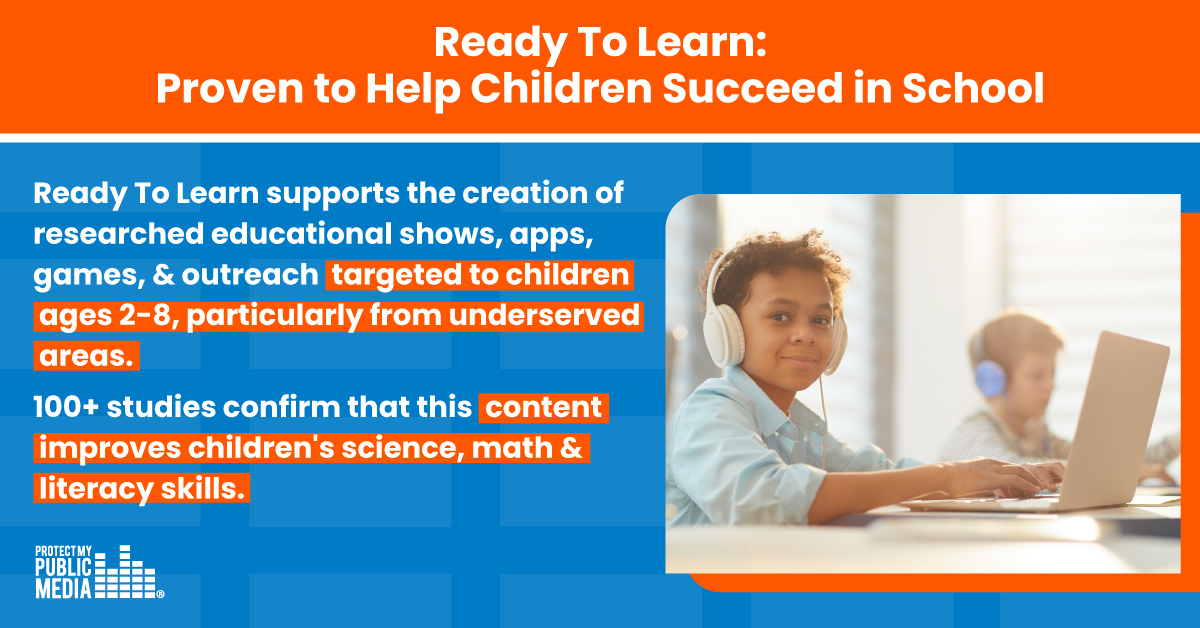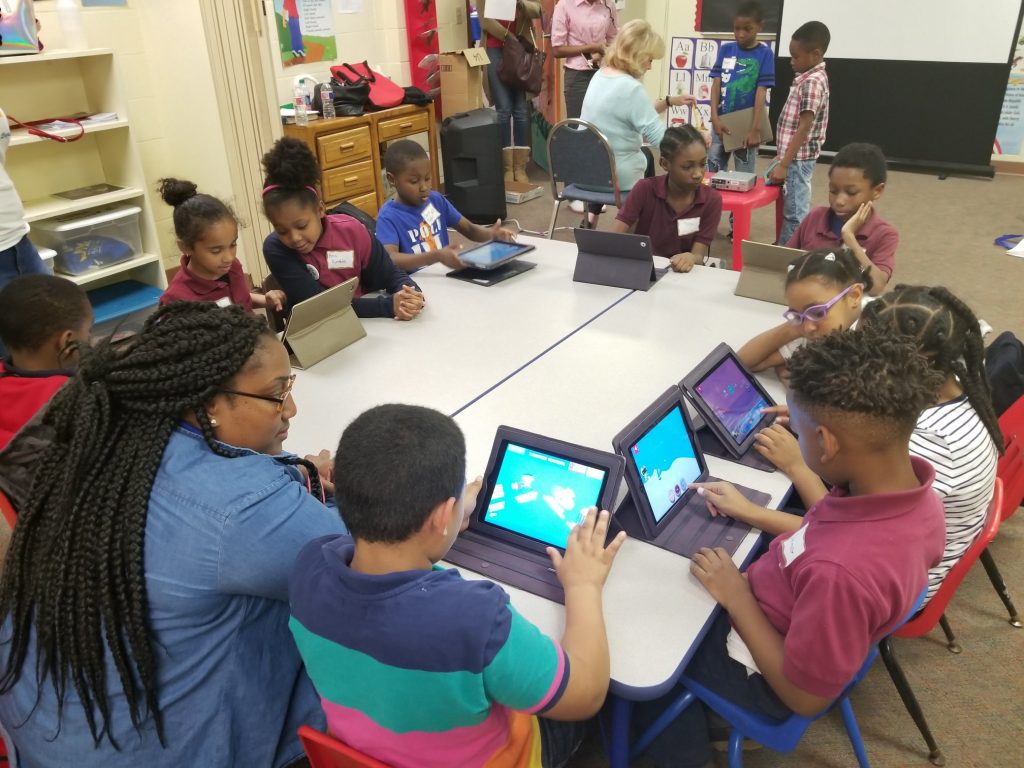
Public television’s beloved early educational programming, complementary media content and community engagement has improved academic outcomes for generations of children, helping close the achievement gap for the nation’s youngest learners. Federal funding through the Ready To Learn grant program makes these educational services possible.
Take a moment to help ensure children and families continue to have access to public media’s early educational media content.
What does Ready To Learn fund?

Local stations host educational activities for children. During a series of educational engagement nights, Louisiana Public Broadcasting showed children a Ready To Learn program, then played an educational ipad game and conducted a hands-on learning experiment. Photo credit: Louisiana Public Broadcasting
For more than 50 years, local public media stations across the country have prepared children for success in school and life through beloved educational children’s media content.
Ready To Learn, a U.S. Department of Education competitive grant program, helps fund the creation of public media’s educational television and digital media for preschool and early elementary school children and their families, particularly from underserved areas.
Under this grant, the Corporation for Public Broadcasting and PBS KIDS work with producers, researchers, local public media stations, and other partners to create, distribute and evaluate PBS KIDS multiplatform content to engage children, families, educators in learning experiences at home, in preschool and out-of-school settings.
Creation of Educational Content
The Ready To Learn grant has supported the production of PBS KIDS series Molly of Denali, Work It Out Wombats!, and Lyla in the Loop, Elinor Wonders Why, Peg+Cat, Odd Squad, SuperWHY!, Martha Speaks and more, as well as complementary interactive, educational online and mobile games, and hands-on activities.
Research and Evaluation of Content
Ready To Learn content is rigorously researched as it is developed and thoroughly evaluated to ensure it helps children make academic gains.
Community Outreach Programs
The grant enables local public television stations to team up with community partners to train teachers and caregivers to use these educational resources in schools, day care centers, libraries, hospitals and more, and host educational summer camps, mobile learning labs and other opportunities for children. Public media stations also leverage the content to host their own educational events to support underserved early learners in their communities.
Why is Ready To Learn important?
When children interact with Ready To Learn content they experience a:
- 14% increase in knowledge of numbers, operations and algebraic thinking
- 25% increase in skip counting
- 21% increase in naming letters
- 37% increase in letter sounds
Specific content has been proven to help children make the following gains:
Children from low-income households who were provided with Ready To Learn funded Molly of Denali videos, digital games, and activities were better able to solve problems using informational text – oral, written, or visual text designed to inform – a fundamental part of literacy that paves the way for future learning, particularly in social studies and the sciences. After only nine weeks of access, this impact is equivalent to the difference in reading skills a first grader typically develops over three months.
More than half of 3-4-year-olds in the United States do not attend preschool. However, virtually every American household can access Ready To Learn’s educational content through 357 local public television stations.
What is the value of Ready To Learn?
The Ready To Learn program supports the creation of researched, effective educational media content that is available to all American children and families for free. This program helps ensure that every early learner has access to educational resources that will prepare them for success in school.
The federal investment in Ready To Learn is small in comparison to its significant impact on closing the achievement gap, improving children’s academic outcomes, and giving all Americans a bright future.